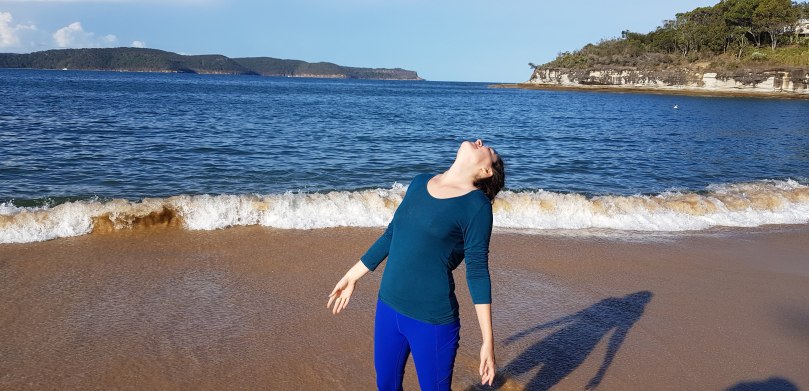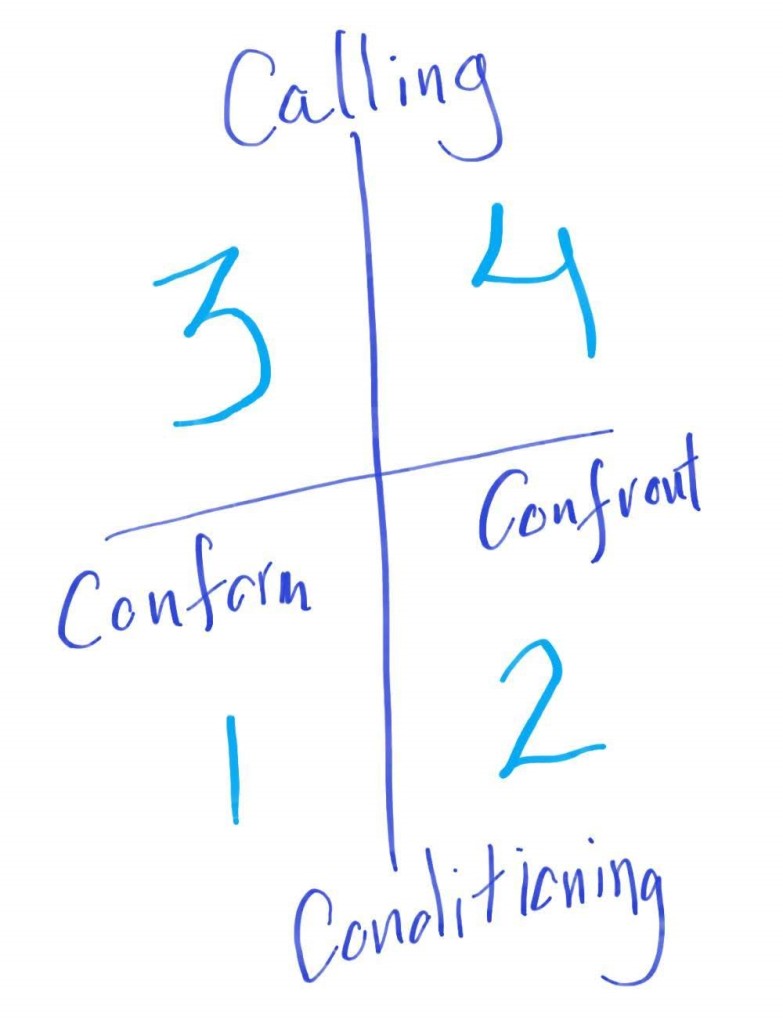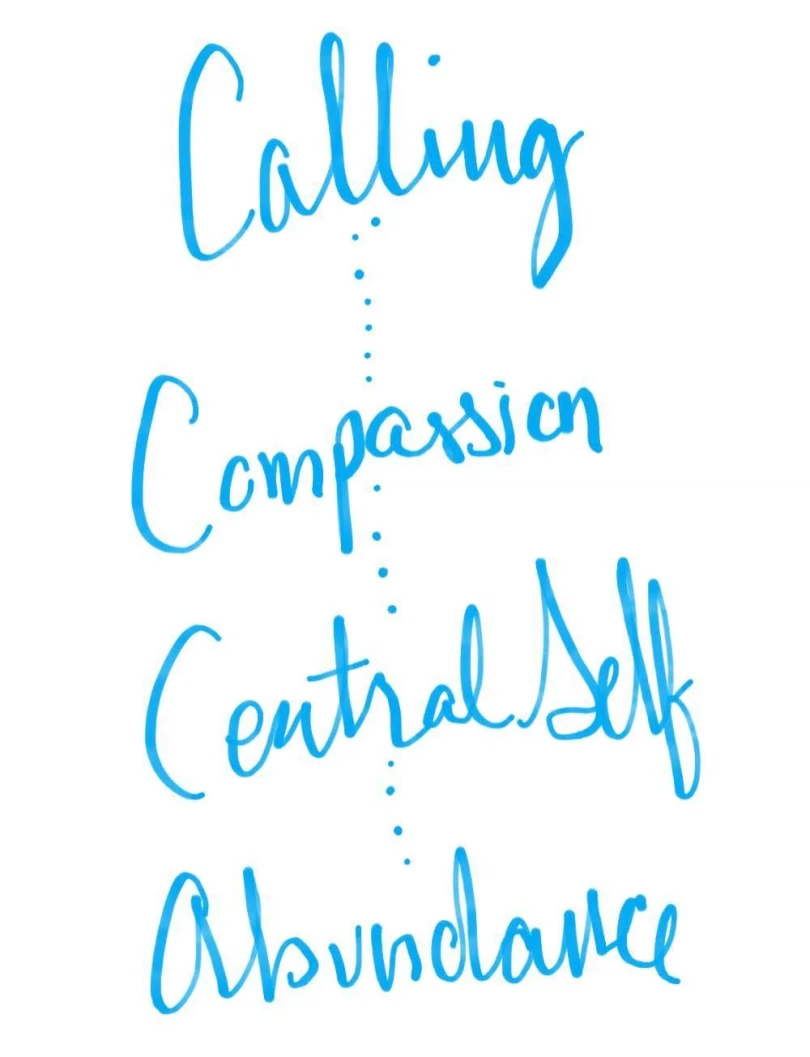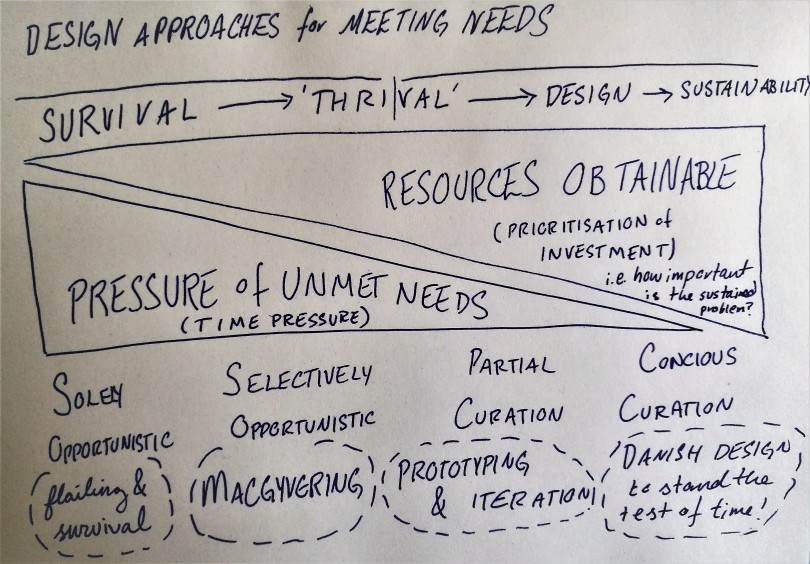 I haven’t published a single piece of writing in over a year on this page. The ambitious achiever driven to get out there inside of me is shaking her head in shame. I’m sitting here holding a large compassionate space to explore what I haven’t said in the last year on this blog.
I haven’t published a single piece of writing in over a year on this page. The ambitious achiever driven to get out there inside of me is shaking her head in shame. I’m sitting here holding a large compassionate space to explore what I haven’t said in the last year on this blog.
This isn’t to say I didn’t write, I just didn’t publish. As I look at why I didn’t share my thoughts, I look back in hindsight and see how confused and uncertain I was, and still am. Boy, oh boy, the lessons have been coming so thick and fast and strong this year, its been like a personal development growth spurt on the inside. I am still confused and uncertain. I don’t know what I want to do about what might be my primary calling to improve empathy systems in the world. I also don’t know what to do about my secondary calling to begin the path to grow mushrooms and fungi as our future of food and materials.
So here is a little bitty ditty I wrote about a crunch of confidence, a collapse of ambition, and an ode to the drivel of drive. Its an attempt to write about why I am learning to love being confused and how I feel alive.
I am lost and floating and doing my damnedest to sit in this precious liminal in-between space and see what emerges. Yet my inner commander and conditioning wants me to pick something and go achieve. In questioning my own inner value and values, I noticed there is a value hole, and I have crammed valuable activities into that gaping maw for decades from my first world, immigrant eldest daughter, female perfectionist, be smart to be safe perspective.
I’ve been on a journey, not too dissimilar from one that every human tends to go on if they are lucky, it is called growing up. These last couple of months I’ve been lucky enough to read and collect some amazing truth bombs and idea nuggets. I’ll summarize the big ones here and then I’ll collect them in a handy 2×2 matrix and tell you a story.
A) Personality as a construct to survive childhood, the calculating self, and the central self:
First some passages and concepts from the book, The Art of Possibility by Rosamund Stone Zander and Benjamin Zander. Please read it as soon as you can, it will truly transform your life if you can hear its message and act on its frame changing delightfulness.
Personality as a construct to survive childhood
“Frank Sulloway, a former research scholar at MIT in the department of brain and cognitive sciences suggests that we think of “personality” as a strategy for”getting out of childhood alive.” Each child in a family stakes out her own territory of attention and importance by developing certain characteristics of her character into “winning ways.” One child may be sociable and outgoing, another may be quiet and thoughtful, but both are aimed at the same thing: to find a safe and identifiable niche in the family and the community and to position themselves to survive. Anxiety regulates behavior and alerts the child to the dangers of being one-down, unattended to, or at a loss.”
The calculating self
The calculating self is the scarcity mindset, prickly cactus inside of me who is always scheming and worrying to get my needs met. It is all the permutations of the bawling baby inside of me, crying for attention and demanding the world focus on me. It is all the ways I have learned to charm and arm myself into situations that appear more certain, safe, sustainable. It is the me that buys into the illusion of safety and certainty. It is the me that strives and survives in a hierarchical and measured world where all the gates are designed to manage scarcity and only dole out resources in small lumps to the deserving. It is the me who plays the game of judgement and deserving versus undeserving.
For the purpose of this reading consider personality is something we develop in order to survive childhood, and “that set, raised to adulthood is what we are calling the calculating self. The prolonged nature of human childhood may contribute to the persistence of these habits long after their usefulness has passed.”
“This calculating self is concerned for its survival in a world of scarcity…. as the calculating self tumbles out of control, it intensifies its efforts to climb back up and get in charge, and the cycle goes round and round. How do we learn to recognize the often-charming, always scheming, sometimes-anxious, frequently conniving calculating self?
One good way is to ask ourselves, What would have to change for me to be completely fulfilled? “
The central self
The central self is the kind, compassionate, abundance based mindset self that lives in our core. It is the part of ourselves that has survived, has nothing to prove, and can be open and giving without designs or complications. It is our collaborative core that is best brought out in our social and caring interactions. It is that part of me that consistently brings tears to my eyes when I witness others kindnesses towards each other or towards me. It is the feeling of having done a kindness and not in search of the validation feeling of having been kind. The central self is a true expression of me without even needing identity. The central self is who I can be once I see past the illusion of certainty and control.
“Such is the nature of the central self, a term we use to embrace the remarkably generative, prolific, and creative nature of ourselves and the world.”
“Unlike the calculating self, the central self is neither a pattern of action nor a set of strategies. it does not need an identity; it is its own pure expression. it is what a person who has survived and knows it looks like.
“From the perspective of the central self, life moves with fluidly like a constantly varying river, and so do we,confident that it can deal with whatever comes its way, it sees itself as permeable rather than vulnerable, and stays open to influence, to the new and the unknown. Under no illusion that it can control the movement of the river, it joins rather than resists its bountiful flow.”
“We might even describe human development as the ongoing reconstruction of the calculating self toward the rich, free, compassionate, and expressive world of the central self.”
WOW! Thank you Rosamund Stone Zander and Benjamin Zander for consolidating and capturing these beautiful frame changing ways of being for us all.
B) Deciphering Conditioning From Calling
Lisa Zigarmi wrote a short piece for Forbes, which for me crystallized in simple words a key component of my struggle: conditioning versus calling. She simply relates her own observations of her behaviors, similar to my own where I would ferociously continue following patterns of high-achiever conditioning. In these cycles there might even be very little joy and gain in the sparks of winning. I was fueling my addiction to attention and having achieved things I was uniquely suited to do (or so I thought, lots of people could do them, they just might approach them differently).
My conditioning cycles through education, experience, and choice were fueling my calculating self’s needs much more than creating space for the growth of my central self. She says it best, “Conditioning gets uncomfortable when it no longer serves you with its endless cycle of proving your worth.” I was definitely proving my worth, my calculating self’s worth, and neglecting the central self who sat behind with a sly smile waiting to be noticed. My central self has a calling that has been driving me since I first decided to go study ethnography, that the world’s systems of sensing what is going on with others are faulty. It drives me still, that organisations need empathy systems to feel with their customers and their employees and instead we create feedback theater that no solid business decision can be based upon, and the whole world is running this way. Why can’t we make more human centric systems that bring empathy up the ladder to hold a place of valid consideration in the input into strategy? Not just product based research and insights, but higher level uncomfortable questions… This is my calling and when I stray too far from the learning I need or stop seeing the link between my choices and this calling I feel I might as well die. This is exactly what Lisa captured so clearly n her article:
“Callings come with discomfort from inner pressure not from external standards. Callings are initially mysterious, unknowable and, therefore, frightening. They feel as though part of you might die if you don’t respond. They provoke confusion around how your unique gifts best serve the world. They require the abandonment of certainty to allow for creative expression to move through you. Callings are quieted when you listen to them.”
C) Conform / Confront ( and all the behaviors in-between )
I met with one of my mentors this week and related to her how I had been burned recently by not reading the signs that my challenging choices and confronting behaviors were making others dangerously uncomfortable. In the story after progressing for sometime… Bam! I got smacked with huge repercussions, and I wasn’t surprised, but I was surprised by just how much they hurt and hurt and hurt. I kept making more and more pain out of this one lesson. I thought I had pulled up out of the nose-dive, only to dip back in again for more. I saw some old patterns resurfacing of how hurt my central self was after having allowed my calculating self to take the driver’s seat for too long, to get shit done, to make it happen, to achieve.
She was so amazing at pinpointing how conforming fully and confronting fully are both unhelpful in terms of influencing and contributing in a group to have impact. She related to me her own story on how quietly conforming not only limits your expression and silences your voice, but it eliminates your contribution from the group achieving a better outcome. One very influential boss took her aside once and told her, “it is not your job to come to these meetings and quietly conform, we get no value from your diverse experience that way.”
On the other side of the coin we both spoke about our experiences as outspoken women who do not shy away from conflict, as well as our lessons on how destructive it can be when that brings on inefficiencies and those around us shut down from our influence. Effectively this can not only negate the desired outcome we are aiming for, but it can also craft a reputation that doesn’t serve our central or calculating selves.
I suppose if there is a moral to this story its the age old mantra of balance or all things in moderation. Ugh! balance, why you gotta be so elusive… such a simple word to say, and lifetimes to learn. Balance, the ultimate endless challenge. For it is not balance we achieve ever, only the art of balancing and the act of noticing unbalance to enact changes and learn again.
D) The 4Cs matrix: growing up from conditioning to calling through conforming and confronting

As any nice consultant would do, I thought to put some of these lessons on a 2×2 matrix and play with the axes. As I started to think about this I started to map some of my experiences and journeys along the zones created. I recalled my childhood (and adulthood!) and how much I bounce between 1 and 2, back and forth, back and forth to learn more and more about what in my conditioning supports my calculating self versus my central self. Have a play and think about your own experiences and how you have bounced around through the zones in your own journey of self development.
Here are some of my examples:
- Conform Conditioning: “Sure I’ll do what everyone else is doing because it seems like it will meet my future needs and set me up for a path of happiness and security. I’ll study hard, get degrees, get solid jobs, build strong relationships, and save money for a rainy day. Sounds like doing what society wants is the only way for me to get what I need from society. I’ll also keep my feet off the dinner table.”
- Confront Conditioning: “WTF mate these rules suck! Why do I need to make my bed everyday if I am only going to sleep in it tonight? UGH this system doesn’t seem to be working for me! Why? Why? Why? This doesn’t work, it doesn’t achieve anything, it’s totally busy work for the sake of keeping us all from achieving our true calling. Get out of my way! I am coming through, this isn’t working FOR ME.”
- Conform Calling: “OMG this is amazing, I enjoy doing this and other people value it! I can be supported and achieve for doing something I believe in truly. Ethnography is fantastic it allows me to take the human and empathetic side of things into business and helps people! I can do this forever and we’ll make such an impact! I am on path, this is totally what I was made to do forever!”
- Confront Calling: “Oh shit, I can’t scale this impact as one person… and the leadership isn’t listening to me because I am not like them. Oh man what if this isn’t my calling anyways, what if I was just serving the calculating self this whole time thinking it was my central self. Is this the right calling? How can the calling be changing as I am more influenced by the river of uncertainty constantly giving me new things to consider? How can I ever build something in the midst of this flowing onslaught of life, experience, and beauty? Is this my calling?”
This is a wonderful little tool to think through where the bouncing around the zones has lead to insights, lessons, and new possibilities. It is the unending joy of the play of balancing. The interplay is endless and the pleasure is in the reinvention of making oneself beyond any calculating self’s habitual charms or demands. The greatest joy I find in the sly smile of the central self and knowing the survival is imminent because I have the confidence to conform, confront, challenge, and change. I make me, everyday. Let’s us give ourselves a 10 out of 10 for making us everyday.
E) Transformation= Abundance + Central Self + Compassion + Calling
The 4Cs matrix is a fun tool to use to unpack stories and illuminate calculating and central self experiences, but it is still a following of a bouncing ball. Transcending and transforming require slightly more direction and discipline for me. I have been changing my relationship with discipline, conditioning, and conforming over the last few years through the mantra, “Self control is empathy with future me.” This has been an amazing tool to internalize the motivation and the results of maintaining self compassion and self-discipline at increasing rates of regularity.
I do find that I need something to direct this transformation that occurs everyday as today’s me makes “tomorrow’s me” (p.s. future me never exists, but more on the power of presence, and that we only have the present another time). So here friends is my path of intentions and the self I work to manifest everyday in what I do, how I do it, and why I do it. I cultivate an abundance mindset by also noticing when I drop into a scarcity mindset (this is often triggered by time scarcity thinking). I notice when my calculating self wants attention and fears not achieving security or resources and I work upon that with a belief of abundance, trust, and compassion. I focus on not beating myself up and awakening self compassion. This is one of my struggles, I find it always easier to hold compassion for others before I will forgive myself or accept that my best may not achieve illusory standards that I set for my behavior. Finally about calling, I accept

that my calling may take many forms and change over time. There may not be one thing which I can dedicate my whole life to, and there may be large periods of floating, which in and of itself is a compassionate form of calling as well. Here are some more examples of self talk which I find helpful:
Abundance Mindset: I believe the world is abundant and the richness of humanity is compassion and fundamentally good. I believe everyone is trying to meet their needs in the best way possible with the resources they have at hand.
Central Self: I will listen to my core voice and keep a watchful eye for the charming and conniving needs of the calculating self, even when they try to disguise themselves in the central self’s generous nature.
Compassion: I will focus on self compassion to maintain my healthiest self and be abundant in what I have to give others. I will notice my judgement and bring awareness to the creeping behaviors of confronting and conforming in extremes.
Calling: I will listen to the calling in me and support myself fully to pursue it, especially as it changes as I am influenced by the river of life around me. I will hold back judgement on my changeability and the dynamic nature of my calling and keep my ear tuned to the whispering of mystery and the unknowns that surround callings.
In closing I want to thank you for reading this far and give you my final challenges as I can communicate them… My calling is to my central self.
Dear central self and my calling,
You freak me out. You are powerful beyond all measure. You are also so quiet sometimes I can ignore you too easily in the noise. You are so important I really need to stop and listen to the silence to hear your whispering.
Because I like feeling accomplished and valuable, I like solving problems I know I can get answers to, so often I make those kinds of problems happen. Then I can see clearly that these upper limiting behaviors are something I like because then I can put my enlightenment on hold to deal with them. As I put my enlightenment in the back seat to the pressures of whatever I am dealing with, I am not present, and I can shy away from your demands, my calling.
Oh calculating self is dancing and sparkling every damn day and saying that she is most important for us all to survive, but without you, dear central self and my calling, none of us will thrive. BUT fear not I am onto her! Calculating self deserves as much compassion and love as we call all give her, she’s just doing her best, yet it doesn’t mean I should ignore the rest.
I make me every day and I promise you my dear central self and my calling that I will endeavor to hold the space and the silence I need to hear you. I will be and you are me.
Thank you for you patience and continued support
Sincerely,
Alicia Dudek
My calling is to my central self.



